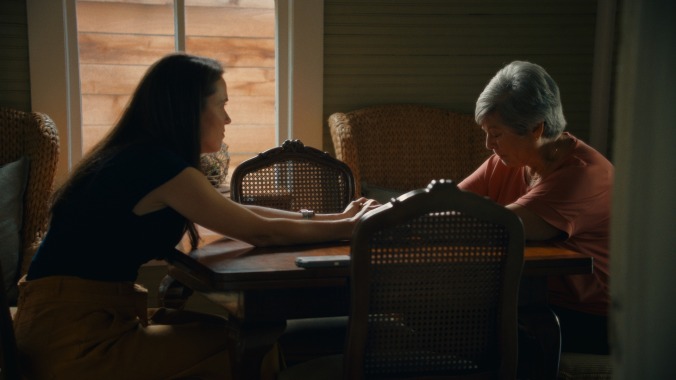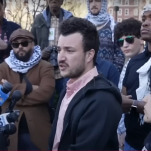HBO’s ‘The Yogurt Shop Murders’ Takes a Different Approach to Documenting True Crime
“I didn't have any kind of ridiculous notion that I could solve it,” Director Margaret Brown tells Jezebel. “I'm much more interested in the untraceability of memory."
Photo: HBO Max EntertainmentMovies
In episode two of director Margaret Brown’s HBO docuseries The Yogurt Shop Murders, Sonora Thomas describes having to “manage the shame of forgetting.” When a reporter showed up to her freshman dorm in college to ask about her older sister, she was struck by a unique guilt that the reporter knew more details about her sister’s life than she could remember.
Thomas’ sister, Eliza Thomas, was 17 years old when she was murdered alongside three other teenage girls—13-year-old Amy Ayers, 17-year-old Jennifer Harbison, and Jennifer’s 15-year-old sister Sarah—in Austin, Texas, in 1991. To be fair, Sonora was only 13 when her sister was murdered, and her family, burdened by grief, never openly talked about what happened to Eliza. Still, memory, as Brown expertly captures in his series, is a really tricky thing.
True crime is a genre marked by sensationalism and fanaticism, but in Brown’s telling of this horrific case, those traits aren’t inherent as much as they’re scrutinized. Instead, the series focuses on trauma’s impact on memory, our understanding of memory at large, and the reverberations of violent crime —allowing it to eschew the genre’s more exploitative tropes.
“I didn’t have any kind of ridiculous notion that I could solve it,” Brown tells Jezebel in a video call. “I’m much more interested in the untraceability of memory, or how to say what a memory even is.”
Having lived in and out of Austin in her youth, Brown remembers the billboards placed around town offering a $25,000 reward for any information about who killed the four teen girls. At some point around closing time for the yogurt shop where Jennifer and Eliza worked, the four girls were bound in the back kitchen, shot in the head, and the building was set on fire. Their bodies weren’t discovered until after the fire was extinguished, meaning much of the crime scene was either contaminated or washed away. Thirty-four years and over fifty false confessions later, the gruesome quadruple homicide remains unsolved.
Austin, a relatively small town at the time, was rocked by the murders. Billboards went up; neighbors held candlelight vigils; schools buried memory time capsules in the girls’ honor; a camera crew snuck into the private funeral; and local musicians wrote and recorded a song titled, “We Will Not Forget.” The families, feeling like they needed to do whatever it took to keep attention on the case, were thrown into the spotlight.
-

-

-

-

-

-

-

-

-

-

-

-

-

-

-

-

-

-

-

-

-

-

-

-

-

-

-

-

-

-

-

-

-

-

-

-

-

-

-

-








































